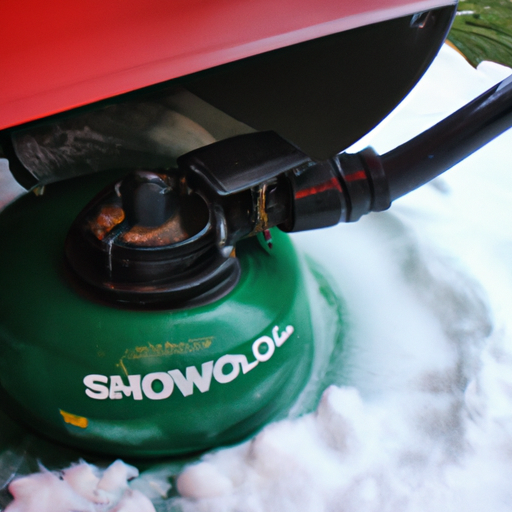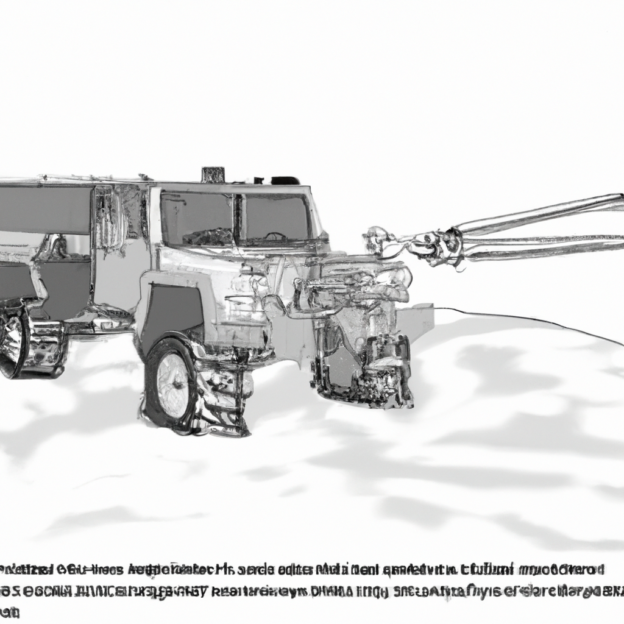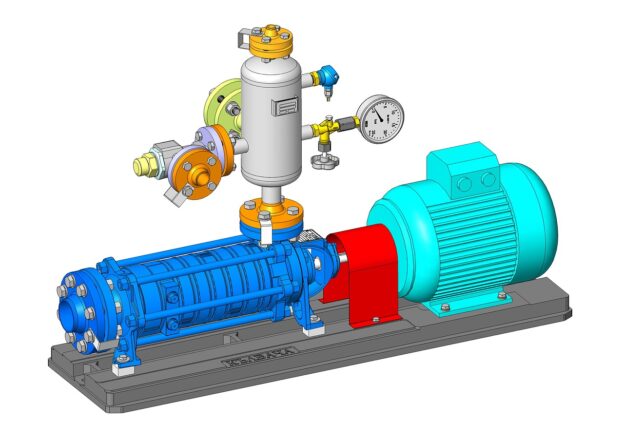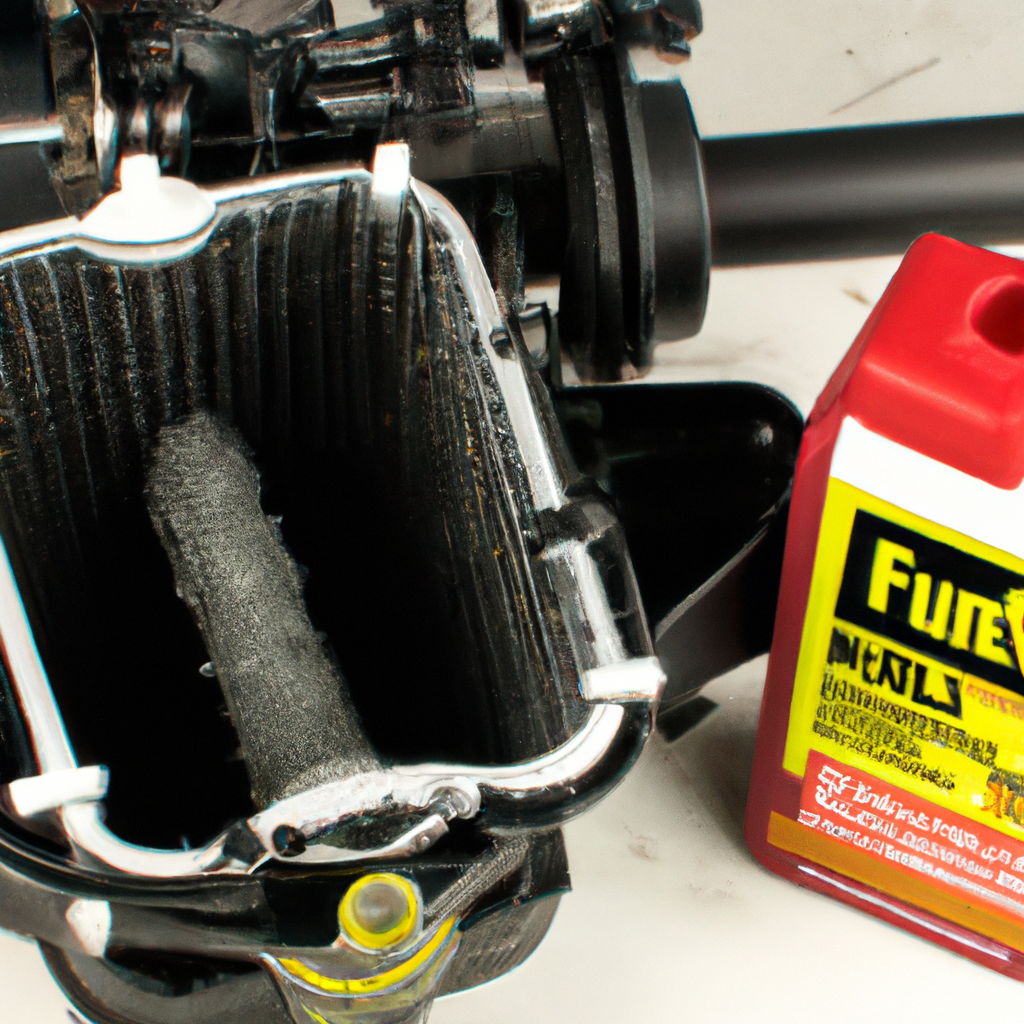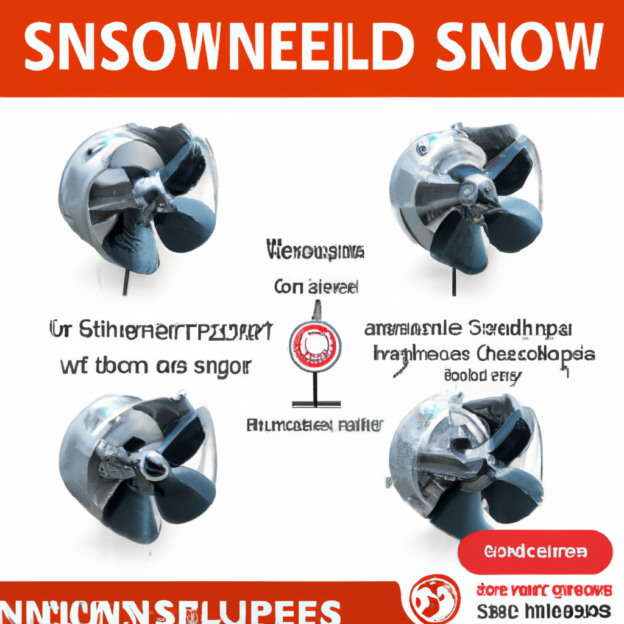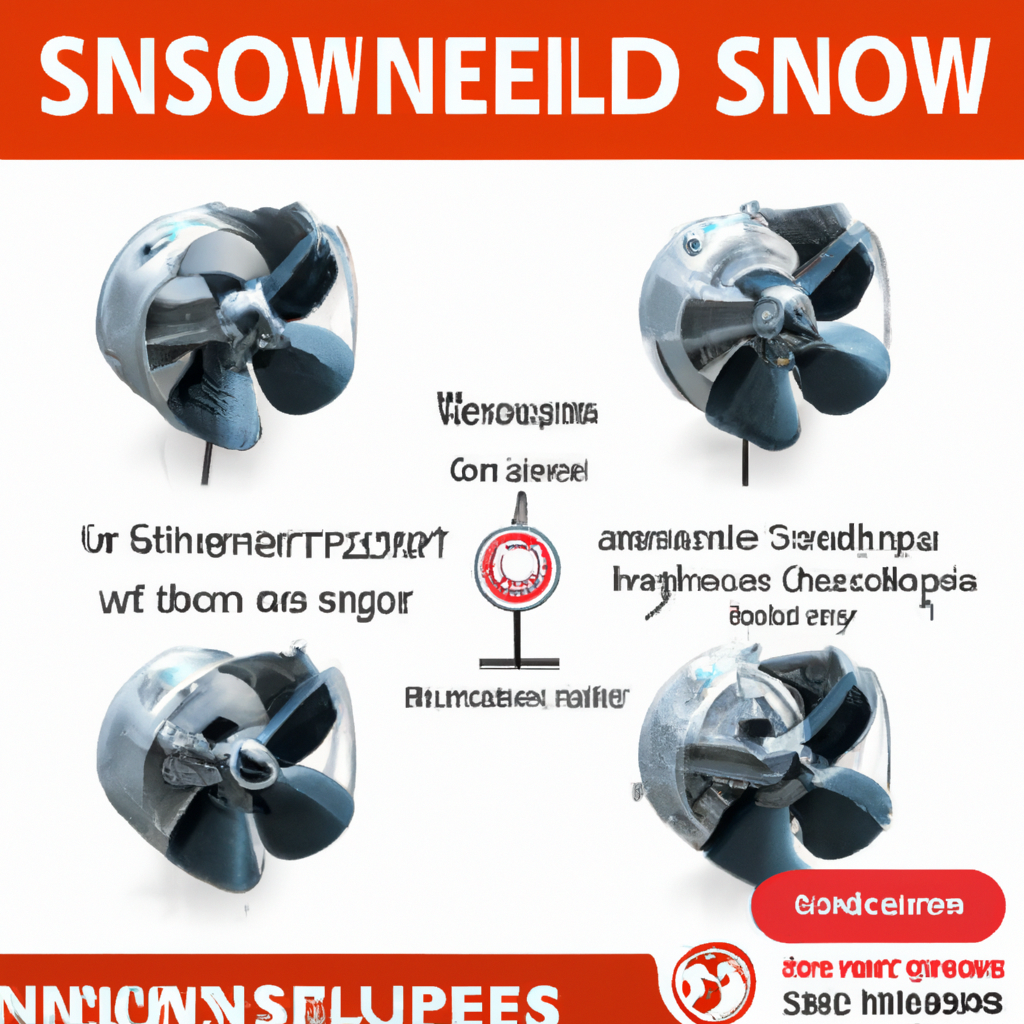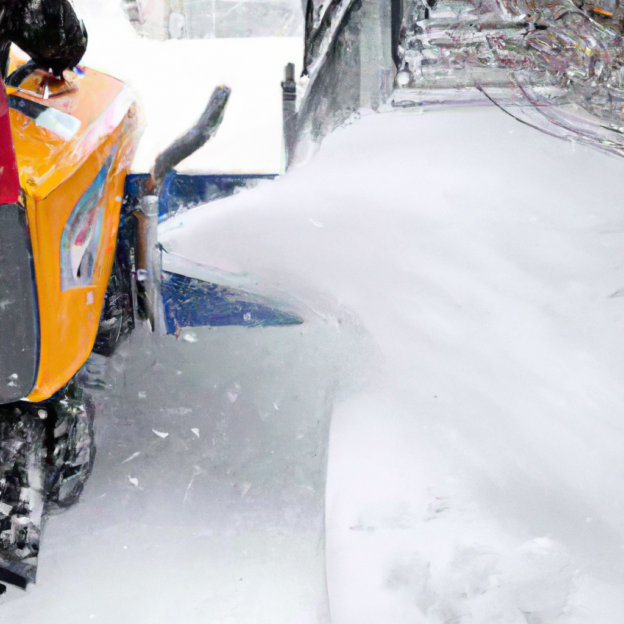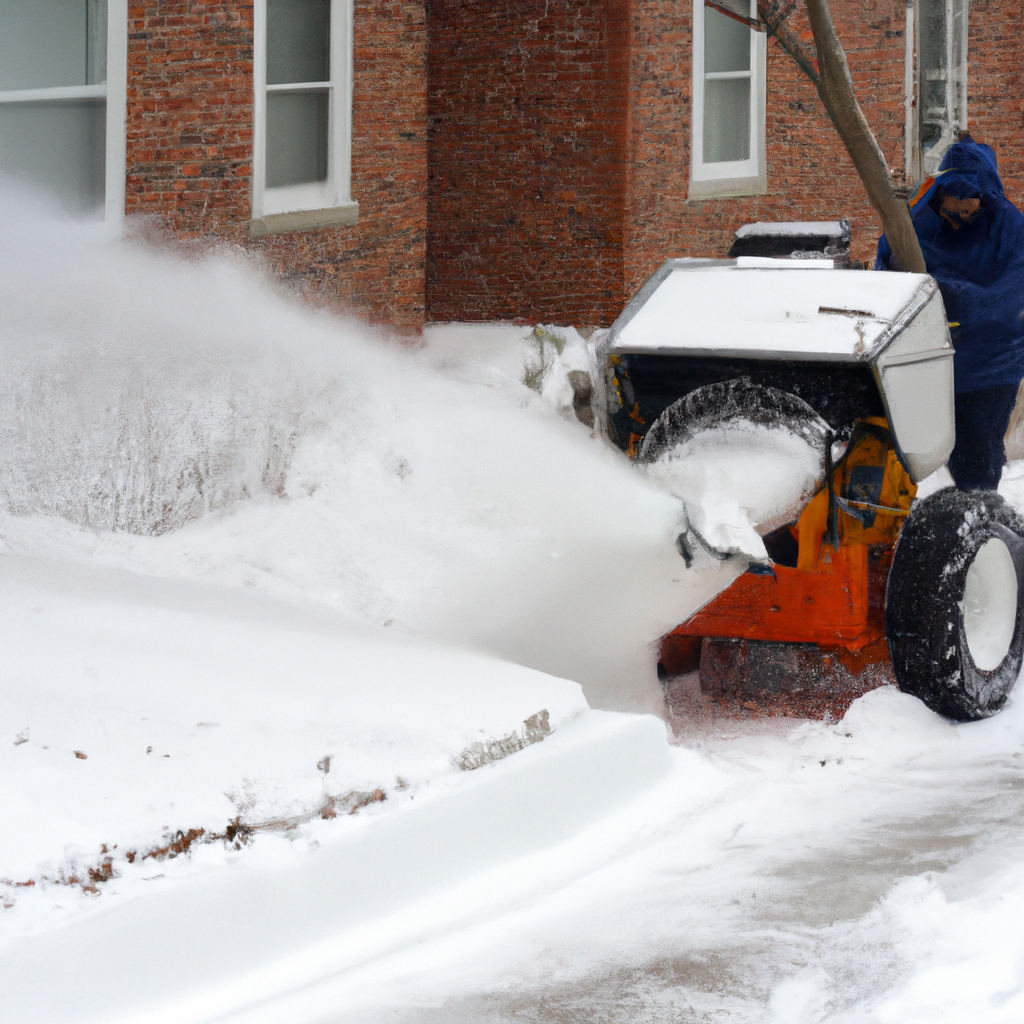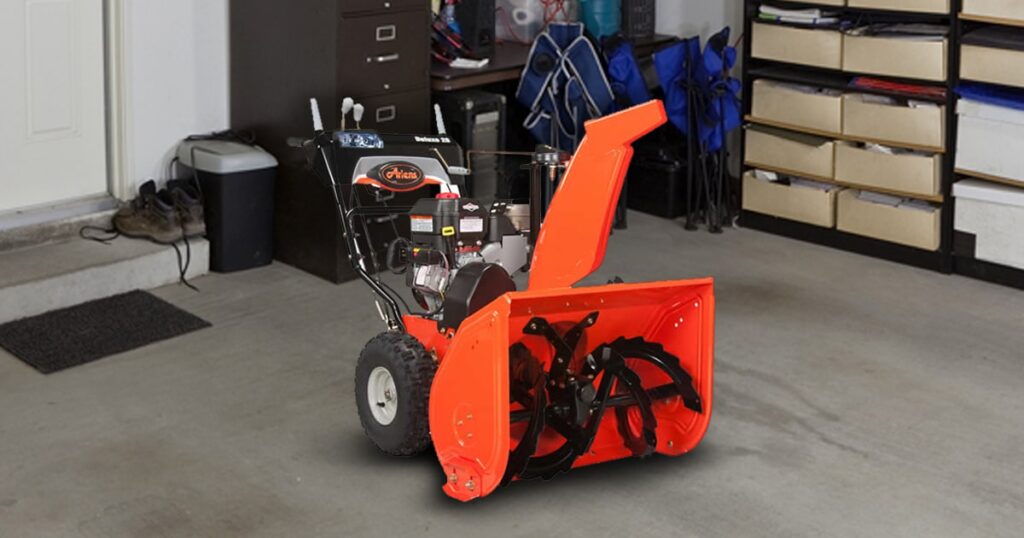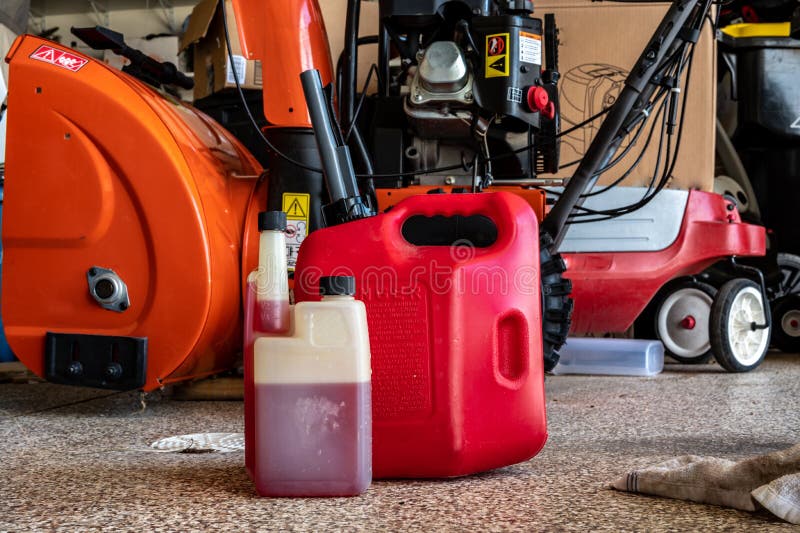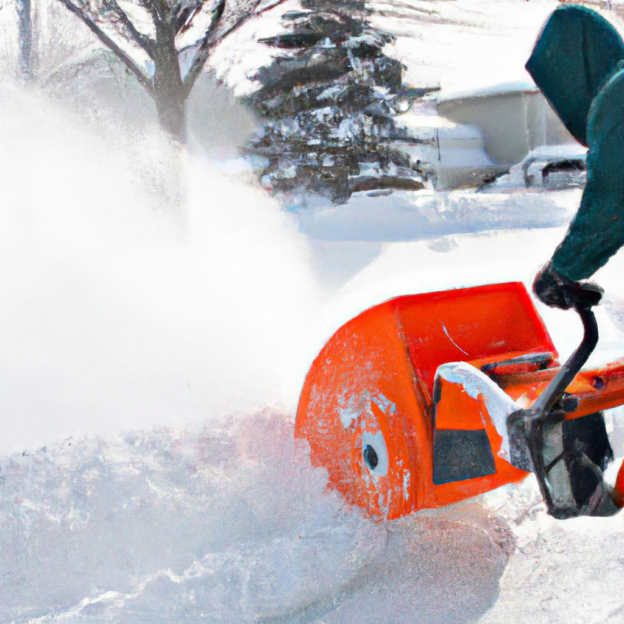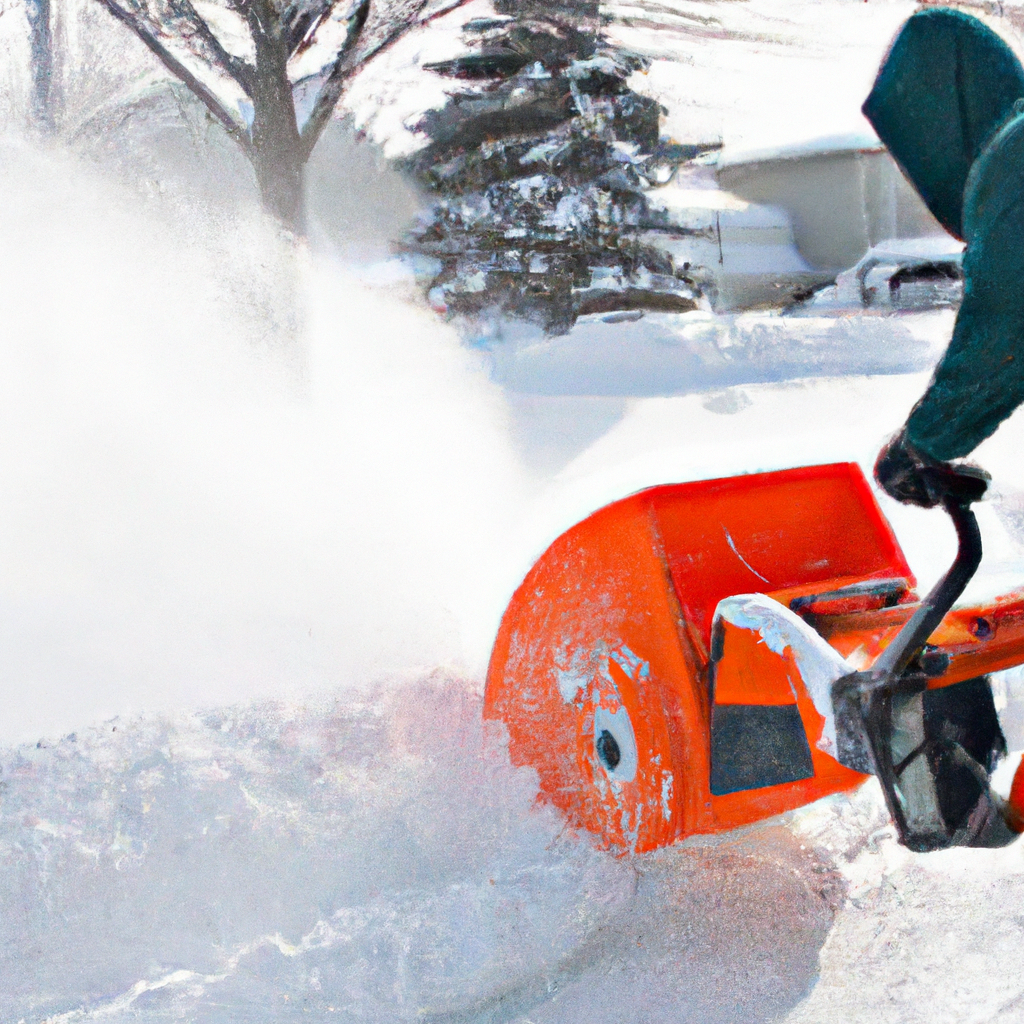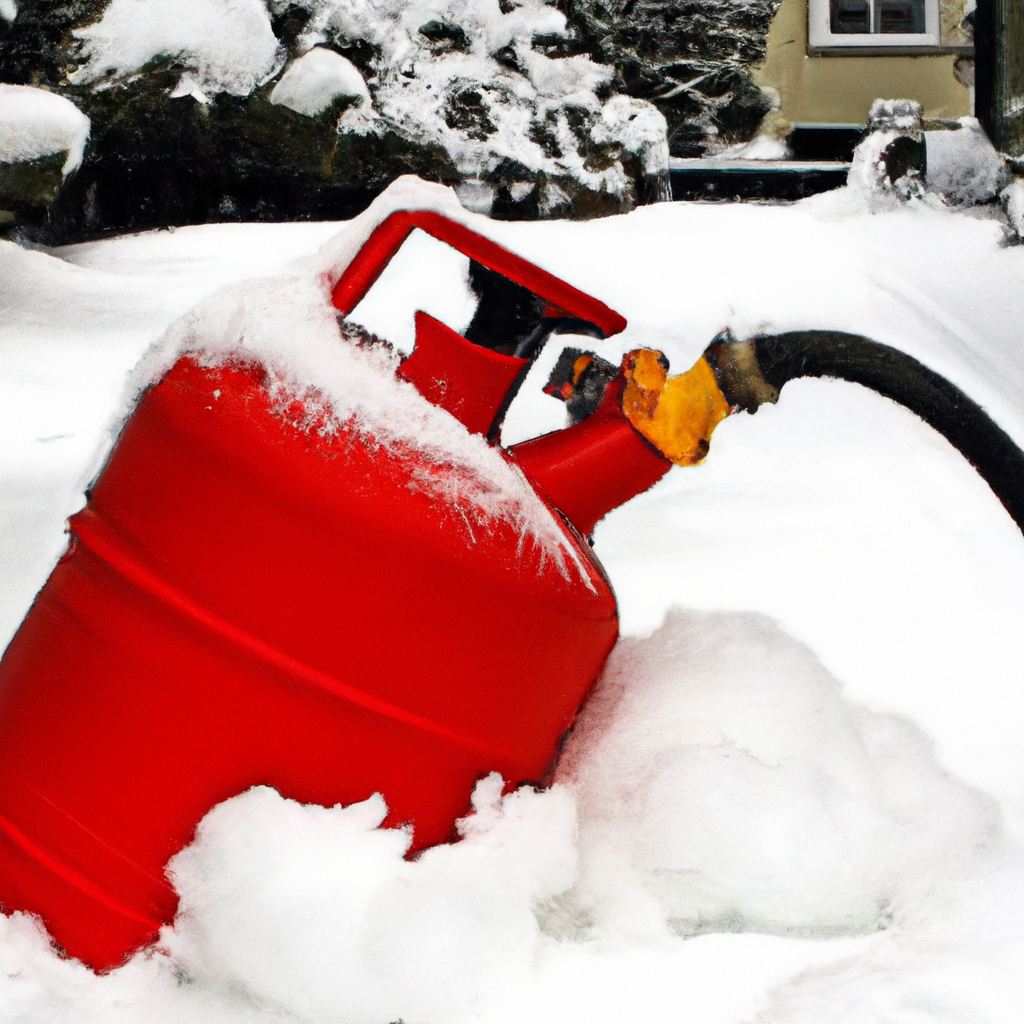So you wake up one morning to find that your trusty snowblower is leaving a trail of oil stains on your garage floor. Frustrating, isn’t it? No need to panic, though! In this article, we’ll walk you through some simple steps to help you deal with a leaking snowblower and get it back to its reliable self in no time. Whether it’s a small drip or a major leakage, we’ve got you covered with practical tips and solutions to keep your snowblower running smoothly and your garage oil-free.

Inspecting the Leaking Snowblower
If you find yourself dealing with a leaking snowblower, the first step is to identify the source of the leak. This will help you determine the best course of action to fix the issue. Leaks can come from various components, such as the fuel system, oil system, coolant system, or even damaged gaskets or seals. By inspecting each of these areas, you can narrow down the cause of the leak and proceed with the necessary repairs.
Identify the source of the leak
To identify the source of the leak, start by examining the snowblower closely. Look for any visible signs of fluid pooling or dripping. Take note of the color and consistency of the leaking fluid, as this can provide clues about which system it may be coming from. Common fluids you might find leaking from a snowblower include fuel, oil, or coolant.
Check for gasket or seal damage
Gaskets and seals are essential components of a snowblower’s engine and various systems. Over time, they can become damaged or worn-out, leading to leaks. Inspect these gaskets and seals carefully for any signs of damage or deterioration. If you notice any cracks, tears, or breaks, it’s important to address these issues promptly to prevent further leakage.
Inspect the fuel system
The fuel system of a snowblower consists of components such as fuel lines, fittings, and the carburetor. Start by checking all the fuel fittings to ensure they are tight and properly sealed. If you find any loose fittings, tighten them securely. Next, inspect the fuel lines for any signs of damage or leaks. If you notice any cracks or leaks, it is recommended to replace the damaged fuel lines. Additionally, the fuel tank cap should be cleaned regularly or replaced if it is damaged or not sealing properly. Lastly, consider checking and, if needed, repairing or replacing the carburetor, as this can also be a potential source of fuel leaks.
Examine the oil system
The oil system of a snowblower is responsible for lubricating the engine and its various moving parts. Oil leaks can occur due to damaged or loose components. Begin by checking the oil drain plug to ensure it is tightened securely. If it is loose, tighten it carefully. Additionally, inspect the oil filter for any signs of damage or leaks. If you notice any issues, it is advisable to replace the damaged or worn-out oil filter promptly. Furthermore, gaskets or seals within the oil system may become worn-out over time, leading to leaks. It is important to inspect these gaskets and seals and replace them if needed. If you come across any loose fittings, using thread seal tape or thread locking compound can help prevent leaks.
Look for coolant leaks
Coolant leaks are another common issue with snowblowers, especially in colder climates. Coolant is responsible for regulating the engine’s temperature and preventing it from overheating. Inspect the coolant system by first checking the coolant level. If it is lower than the recommended level, consider topping it up. Next, examine the radiator and hoses for any visible signs of leaks or damage. If you notice any cracks, leaks, or worn-out components, it is crucial to replace them promptly to prevent coolant leaks.
Fixing Fuel System Leaks
If you have determined that the leak is originating from the fuel system, there are several steps you can take to fix the issue and ensure the snowblower operates smoothly.
Tighten loose fuel fittings
Start by carefully inspecting all the fuel fittings in the snowblower. If you notice any loose fittings, use a suitable wrench or tool to tighten them securely. It is important not to overtighten them, as this can cause damage. Finding the appropriate balance between snug and secure is key.
Replace damaged fuel lines
If you find any fuel lines that are cracked, leaking, or damaged in any way, it is crucial to replace them. Fuel lines are essential for transporting gasoline from the tank to the engine. Before replacing the damaged fuel lines, ensure you have the correct replacement parts and follow the manufacturer’s instructions to ensure a proper fit.
Clean or replace the fuel tank cap
The fuel tank cap plays a critical role in keeping the fuel system sealed and preventing leaks. If the fuel tank cap is not sealing properly or is damaged, it should be cleaned thoroughly or replaced. This can help prevent any fuel from spilling or leaking during operation.
Repair or replace the carburetor
The carburetor is a vital component of the fuel system that mixes air and fuel to ensure proper combustion in the engine. If you suspect that the carburetor is the source of the leak, it is advisable to have it inspected by a professional or authorized service center. They can diagnose any issues and either repair or replace the carburetor as needed.
Stopping Oil Leaks
Oil leaks can be messy and harmful to the snowblower’s engine if not addressed promptly. Here are some steps to help you stop oil leaks and maintain the oil system:
Check the oil drain plug
Begin by inspecting the oil drain plug located on the bottom of the engine. Ensure it is tightened securely. Over time, vibrations and engine operation can cause the plug to become loose, leading to oil leaks. If you find the oil drain plug loose, tighten it carefully to prevent any further leakage.
Inspect the oil filter
The oil filter is responsible for removing impurities and contaminants from the engine oil. Inspect the oil filter regularly for any signs of damage or leaks. If you notice any leaks, it is crucial to replace the oil filter promptly to prevent oil from seeping out.
Replace damaged or worn-out gaskets or seals
Gaskets and seals play a crucial role in preventing oil leaks. Over time, these components can become worn-out or damaged, leading to leakage. Inspect the gaskets and seals within the oil system carefully. If you notice any signs of deterioration or damage, it is important to replace them promptly. This will help ensure a proper seal and prevent oil leaks.
Use thread seal tape or thread locking compound on loose fittings
If you come across any loose fittings within the oil system, consider using thread seal tape or thread locking compound to prevent leaks. These products are designed to provide an additional layer of sealing and help secure fittings, preventing oil leaks due to loose connections.
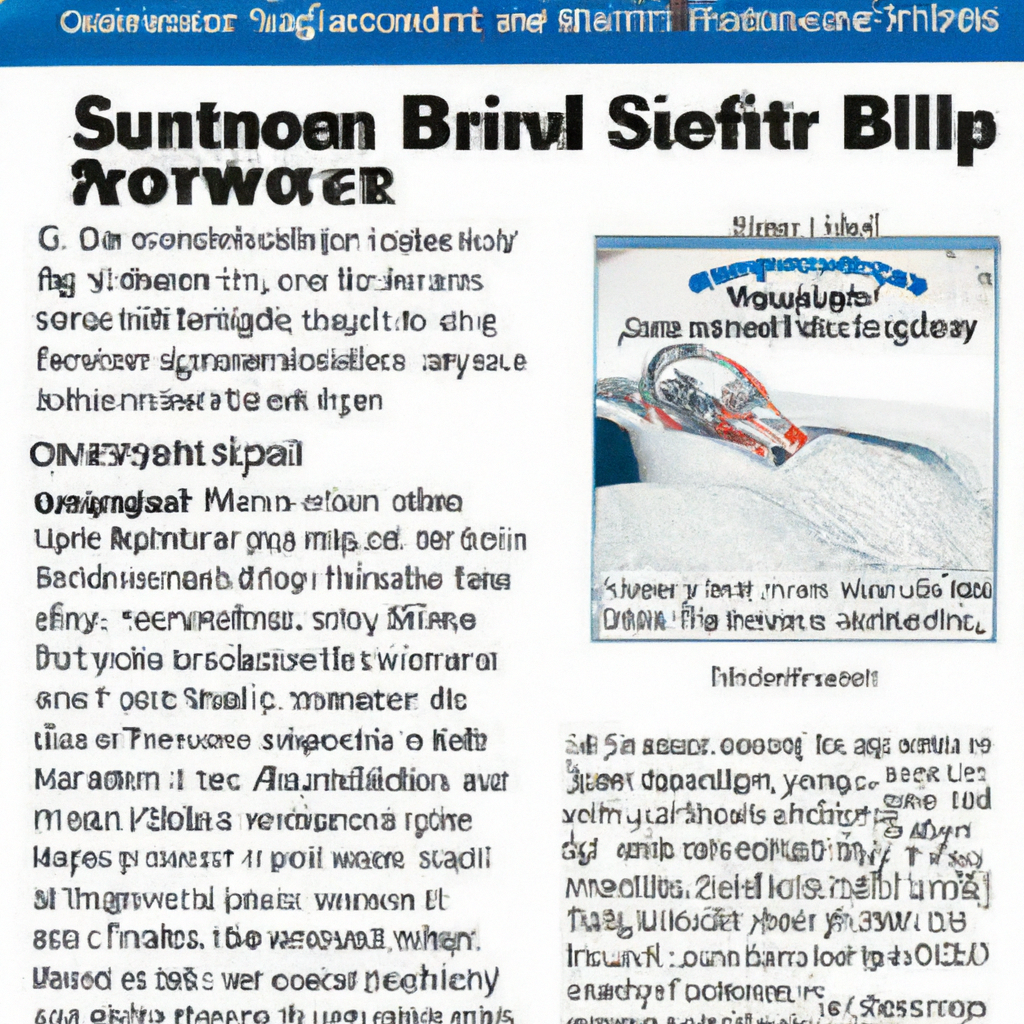
Addressing Coolant Leaks
Coolant leaks are a concern, especially during cold weather when the snowblower’s engine needs proper cooling. To address coolant leaks, follow these steps:
Check the coolant level
Start by checking the coolant level in the snowblower’s coolant reservoir. If the level is lower than the recommended amount, consider topping it up. It is essential to use the correct coolant mixture as specified by the manufacturer to ensure optimal performance.
Inspect the radiator and hoses
Inspect the radiator carefully for any signs of leaks, cracks, or damage. Additionally, check the hoses connected to the radiator for any visible damage or leaks. If you notice any issues, including worn-out components or leaks, it is crucial to replace them promptly to prevent coolant leaks.
Replace damaged or worn-out coolant system components
If you encounter any damaged or worn-out components within the coolant system, such as the radiator or hoses, it is important to replace them promptly. These components play a vital role in maintaining the engine’s temperature and preventing overheating. Proper functioning of the coolant system is crucial to prevent coolant leaks and ensure the snowblower operates effectively.
Repairing Gasket or Seal Damage
Gaskets and seals are critical components that prevent leaks in various systems of the snowblower. If you identify any damaged gaskets or seals during your inspection, follow these steps to repair them:
Identify the damaged gasket or seal
Carefully locate the damaged gasket or seal. It may be necessary to disassemble certain components or systems in order to access the damaged gasket or seal.
Clean the area surrounding the damaged gasket or seal
Before applying any adhesive or sealant, it is crucial to clean the surrounding area thoroughly. Use an appropriate cleaning solution and ensure the area is free from any debris, dirt, or oil. This will help create a clean and smooth surface for the adhesive to bond effectively.
Apply a gasket or sealant adhesive
Once the area is clean, apply a suitable gasket or sealant adhesive to the damaged gasket or seal. Follow the manufacturer’s instructions for the specific adhesive you are using. Apply the adhesive evenly and ensure complete coverage. This will help create a strong and reliable seal.
Allow the adhesive to cure
After applying the adhesive, allow it sufficient time to cure. Follow the manufacturer’s instructions regarding curing time. It is important to avoid any stress or pressure on the repaired gasket or seal during the curing process. Once the adhesive has cured, reassemble the components and systems, and perform a thorough check to ensure the leak is resolved.
Preventing Common Leaks
Taking preventive measures can significantly reduce the chances of encountering leaks in your snowblower. Here are some tips to help you prevent common leaks and maintain a reliable machine:
Follow proper maintenance practices
Regularly follow the manufacturer’s recommended maintenance schedule for your snowblower. This includes routine inspections, oil changes, filter replacements, and other necessary maintenance tasks. Proper maintenance can help identify potential issues before they turn into major leaks or failures.
Store the snowblower properly during the offseason
When not in use, it is essential to store your snowblower properly. Choose a dry and secure location to prevent exposure to moisture and ensure the machine is protected from the elements. Proper storage can help prevent rust, corrosion, and other issues that may lead to leaks.
Use the correct fuel mixture
Using the right fuel mixture is crucial for the snowblower’s engine performance and longevity. Follow the manufacturer’s recommendations regarding the appropriate fuel type and fuel-to-oil ratio. Using the wrong fuel mixture can lead to engine issues, including leaks.
Avoid overfilling the oil or coolant
When adding oil or coolant to your snowblower, it is important to avoid overfilling. Overfilling can cause excess pressure within the systems, leading to leaks. Follow the recommended fill levels specified by the manufacturer to prevent this issue.
Seeking Professional Help
If you are unsure about how to address the leak or if you encounter a complex issue, it may be best to seek professional help. Here are a couple of options to consider:
Consult the snowblower’s manual
The snowblower’s manual is an invaluable resource when it comes to understanding its components, systems, and maintenance procedures. Consult the manual for guidance on addressing specific leaks or for troubleshooting steps. It will provide you with accurate information tailored to your snowblower’s make and model.
Contact the manufacturer or authorized service center
If you find yourself unable to resolve the leak or if it requires specialized tools or expertise, it is recommended to contact the manufacturer or an authorized service center for assistance. They have the knowledge and experience to diagnose and repair complex issues properly. Getting professional help can save you time, effort, and potential mistakes.
Maintaining the Snowblower
Regular maintenance is crucial for the longevity and performance of your snowblower. Here are some key maintenance practices to keep in mind:
Regularly inspect and clean the snowblower
Inspect your snowblower regularly, looking for any signs of wear, damage, or leaks. Clean the machine thoroughly, removing any debris or buildup from the various components. This will ensure that the snowblower operates smoothly and minimize the chances of leaks occurring.
Keep the fuel and oil systems well-maintained
Maintaining the fuel and oil systems is essential for avoiding leaks. Regularly check the fuel and oil levels, ensuring they are at the correct levels. Perform routine oil changes and filter replacements as recommended. Properly maintain and store fuel to prevent contamination. These practices will help keep these systems in optimal condition, reducing the risk of leaks.
Check for worn-out parts and replace them
Over time, certain parts of your snowblower may become worn-out or damaged, leading to leaks. Regularly inspect all components, including belts, hoses, filters, and seals, for signs of wear. If you notice any parts that are past their prime, it is important to replace them promptly. This proactive approach will help prevent leaks and ensure the snowblower operates efficiently.
Safety Precautions
When dealing with a leaking snowblower or performing any maintenance or repairs, it is essential to prioritize safety. Keep the following precautions in mind:
Always disconnect the spark plug wire
Before working on the snowblower, always disconnect the spark plug wire to prevent accidental starting. This will ensure your safety while inspecting, diagnosing, or fixing any leaks.
Wear protective gloves and safety glasses
Protective gloves and safety glasses are crucial when working on a snowblower. Gloves will protect your hands from sharp edges and potential chemical exposure, while safety glasses will shield your eyes from debris or splashing fluids.
Work in a well-ventilated area
Whether you are working indoors or outdoors, ensure there is proper ventilation. Exhaust fumes, fuel vapors, or other chemicals can pose health risks if inhaled in closed or poorly ventilated areas. Open windows, use fans or ventilation systems, and prioritize your safety.
Avoid smoking or working near open flames
Working with flammable materials, such as fuel or oil, poses a fire hazard. It is crucial to avoid smoking or working near open flames when inspecting, repairing, or handling the snowblower. Remove any potential ignition sources from the work area to reduce the risk of accidents.
Conclusion
Dealing with a leaking snowblower can be a frustrating experience, but by following the steps outlined in this article, you can identify the source of the leak and address it effectively. Regular inspection, proper maintenance practices, and taking necessary safety precautions are key to preventing and resolving leaks. However, in case of complex issues or if you are unsure about the repair process, do not hesitate to seek professional help. Remember, by properly maintaining your snowblower, you can ensure its optimal performance, longevity, and a leak-free operation season after season.

